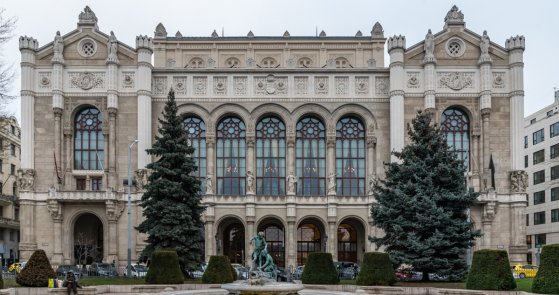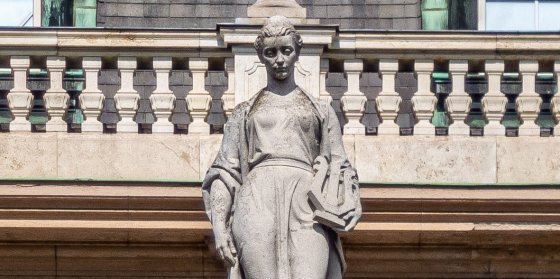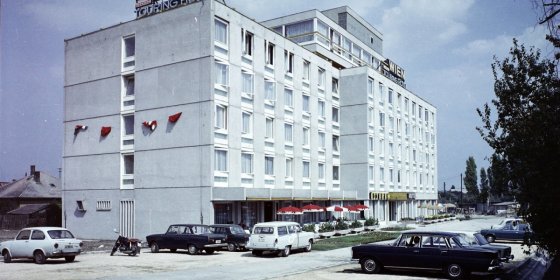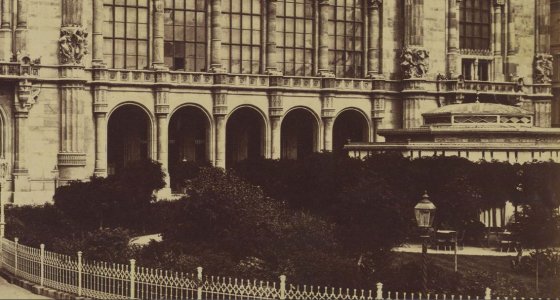 The „intertwined history” of the bridges and the city of Budapest
Which ideas and events have shaped the fate of bridges of Budapest and the cityscape? Alongside many other interesting facts, this question is also answered this newly published book by the Budapest City Archives, which introduces the history of bridges in Budapest.
The „intertwined history” of the bridges and the city of Budapest
Which ideas and events have shaped the fate of bridges of Budapest and the cityscape? Alongside many other interesting facts, this question is also answered this newly published book by the Budapest City Archives, which introduces the history of bridges in Budapest.
Vigadó
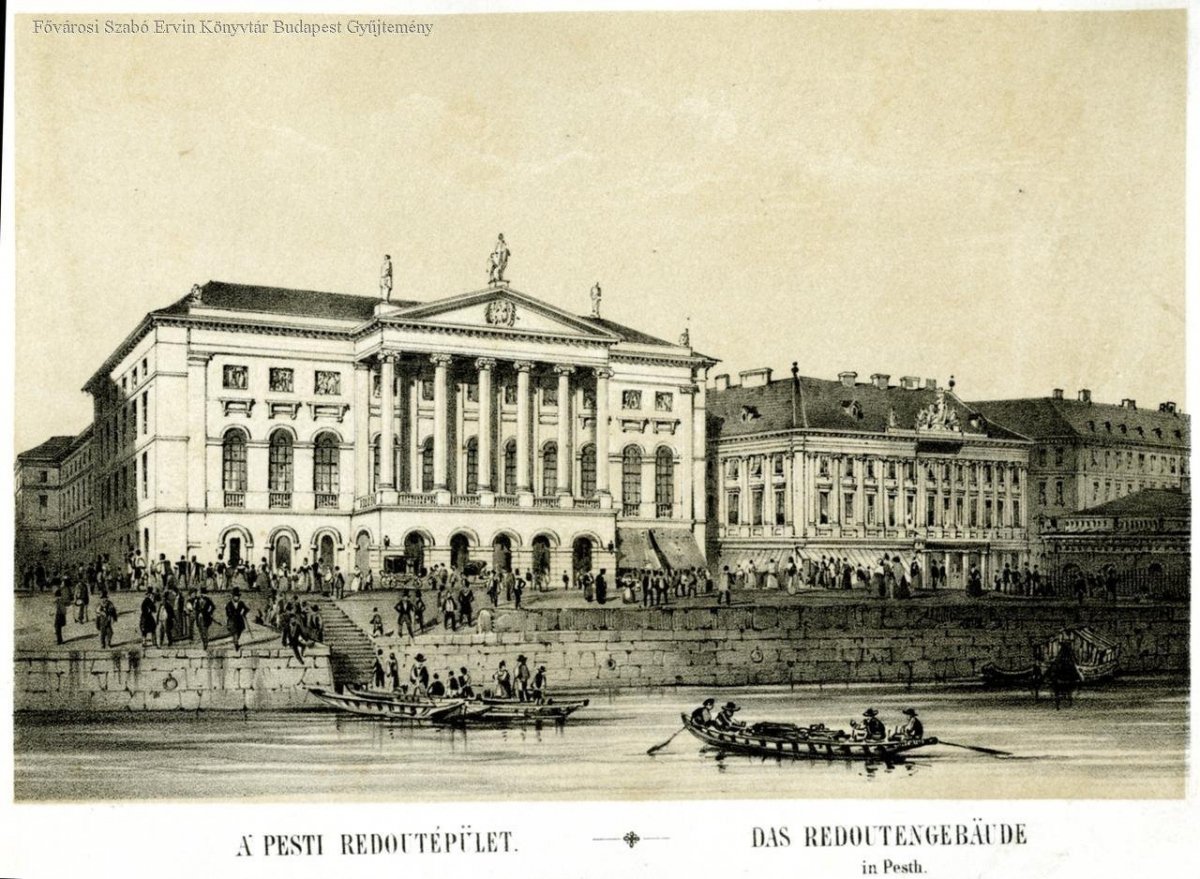 In the wake of the disappeared Redoute - Pest's first place for merriment existed for only 16 years
In the wake of the disappeared Redoute - Pest's first place for merriment existed for only 16 years
January 17, 2023 at 11:00 AM
At the beginning of the 19th century, the dynamically developing city of Pest desperately needed an elegant ballroom in which high-quality dance parties could be held that met the needs of the high-class audience. The first site in the capital that was built for this purpose was the Redoute, the predecessor of today's Vigadó of Pest, but the classicist palace, handed over 190 years ago, on 13 January 1833, decorated the Danube bank of Pest for only 16 years.
An exhibition about 150 years of Hungarian monument protection has opened
September 15, 2022 at 4:00 PM
Monument protection in Hungary is 150 years old this year. The rich history of the past century and a half is presented on more than six hundred square metres at the exhibition that has just opened in Vigadó, Pest. Visitors can get to know the different types of monuments, the award-winning restorations of the past years, and the history of monument protection can be traced along a timeline.
65 years of National Poetry Day – Sculptures in Budapest pay tribute to poetry
April 11, 2021 at 12:00 PM
For the second year in a row, the country is celebrating National Poetry Day behind closed doors. After last year's tour of statues, when Pestbuda visited the monuments of famous poets, we now showcase several works depicting poetry itself on Budapest's famous buildings.
When Five Year Plans decided the future of Budapest
November 16, 2020 at 9:00 AM
Under Socialist rule, the state governed economy operated according to what were called five-year plans. These determined the type and volume of goods and raw materials to be produced in the next five year period. However, these should not be equated with a well thought out business plan, as they were not based on realistic demand and business opportunities.
Intervention from Ferenc Deák may have allowed the Hangli Kiosk to open on the Danube promenade
September 15, 2020 at 9:00 AM
The Danube Promenade was once lined with several almost legendary buildings. These included the Redoute, the Queen of England Hotel, the Lloyd Palace and the Ritz Hotel. Alongside the grand palaces stood a small building, the Hangli Kiosk. The restaurant was named after its owner, Mark Hangl, an Austrian-born restaurant owner who came to Budapest at a young age, and who was helped by Ferenc Deák himself, in opening the kiosk. The Hangl Kiosk stood in front of the Pest Vigadó from 1870 until it was lost in the end days of the Second World War, alongside so many other beauties.
More articles
 The „intertwined history” of the bridges and the city of Budapest
Which ideas and events have shaped the fate of bridges of Budapest and the cityscape? Alongside many other interesting facts, this question is also answered this newly published book by the Budapest City Archives, which introduces the history of bridges in Budapest.
The „intertwined history” of the bridges and the city of Budapest
Which ideas and events have shaped the fate of bridges of Budapest and the cityscape? Alongside many other interesting facts, this question is also answered this newly published book by the Budapest City Archives, which introduces the history of bridges in Budapest.
 The Bridge Report, which brought a turning point in the history of Budapest
A travel report that changed the history of Pest and Buda, as well as Hungary. The little book contributed to the change of half a thousand years of legal customs and the implementation of an investment of unprecedented size and technical quality. This book was The Bridge Report [Hídjelentés in Hungarian].
The Bridge Report, which brought a turning point in the history of Budapest
A travel report that changed the history of Pest and Buda, as well as Hungary. The little book contributed to the change of half a thousand years of legal customs and the implementation of an investment of unprecedented size and technical quality. This book was The Bridge Report [Hídjelentés in Hungarian].
 Drama on the university wall - The heroic monument was planned 95 years ago
In the constant hustle and bustle of the Egyetem Square in Pest, the students may not even notice the monument that decorates the short section of wall between the church and the central building of ELTE. However, it commemorates their predecessors, the heroes who fought for their country in World War I, and those who heroically helped them. The first design of the dramatically collapsing soldier was born in 1928, ninety-five years ago.
Drama on the university wall - The heroic monument was planned 95 years ago
In the constant hustle and bustle of the Egyetem Square in Pest, the students may not even notice the monument that decorates the short section of wall between the church and the central building of ELTE. However, it commemorates their predecessors, the heroes who fought for their country in World War I, and those who heroically helped them. The first design of the dramatically collapsing soldier was born in 1928, ninety-five years ago.

